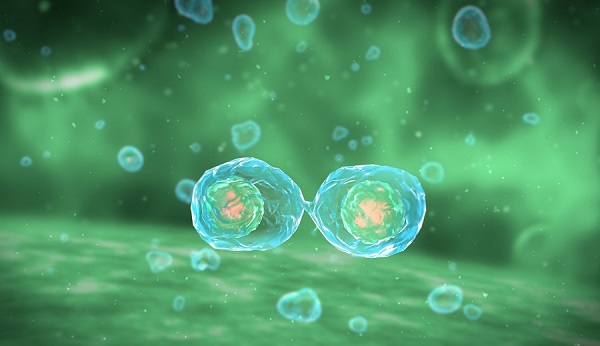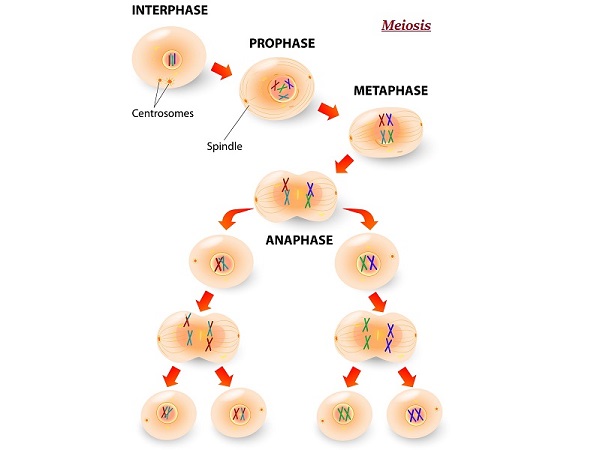
- Biology Notes for UPSC IAS Prelims (Part II)
- Biology - Home
- Biology - Classification of Organisms
- Biology - Cell Division
- Biology - Virus
- Biology - Bacteria
- Biology - Fungi
- Biology - The Roots
- Biology - The Plant Stem
- Biology - The Plant Leaf
- Biology - The Flowers
- Biology - The Fruit
- Biology - Plant Diseases
- Biology - The Blood
- Biology - Blood Group
- Biology - Human Brain
- Biology - Skeleton System
- Biology - Endocrine System
- Biology - Endocrine Diseases
- Biology - Carbohydrate
- Biology - Proteins
- Biology - Fats
- Biology - Vitamins
- Biology - Minerals
- Biology - Genetic Terminology
- Organisms & their Chromosome Counts
- Biology - Viral Diseases
- Biology - Bacterial Diseases
- Branches of Biology
- Inventions & Discoveries in Biology
- Nobel Prize in Biology
Biology - Cell Division
Introduction
The process of division of parent cell into two or more daughter cells is known as cell division.
In early 1880s, Flemming first observed the process of cell division.

Following are the three types of cell division −
Amitosis
Mitosis &
Meiosis
Let’s discuss each of them in brief −
Amitosis
Parent cell gets divided into two parts, and each of them grows as a new complete organism.
Amitosis can be seen in less developed organisms. E.g. bacteria
Amitosis is also known as binary fission.
There is no stage of division, cell directly gets divided into two new organisms.
Mitosis
The process of division of parent cell into two new identical cells is known as mitosis.
In both the new cells, the number of chromosomes remain same.
Mitosis (cell division) occurs only in eukaryotic cells.
In mitosis, the division of the nucleus is preceded by the S stage (i.e. interphase - during this phase, the DNA is replicated).
After the interphase, the cytokinesis process begins, which divides the cytoplasm, cell organelles, and cell membrane into two new cells.
The process of mitosis is divided into the following stages −
Prophase
Prometaphase
Metaphase
Anaphase
Telophase
The stages of mitosis are described in the following image −

Let’s discuss each of them in brief −
Prophase
During the prophase, cell prepares to get divided.
The prophase process is also known as chromosome condensation, as chromatin fibers condense into discrete chromosomes.
Each chromosome has two chromatids and these two chromatids are joined at a place known as centromere.
Prometaphase
In this phase, the nuclear envelope gets disintegrated into small membrane vesicles.
Metaphase
In this phase, the two centrosomes start pulling the chromosomes towards opposite ends of the cell and ensure the equitable distribution of chromosomes.
Anaphase
In this phase two identical daughter chromosomes are formed.
Telophase
Telo is a Greek word meaning ‘end’.
In this phase, the nuclear envelop gets broken and a new nuclear envelop forms.
The new envelope gets formed around each set of separated daughter chromosomes; parallel, the nucleolus reappears.
Likewise, the mitosis is complete.
Cytokinesis
Cytokinesis, technically, is not a phase of mitosis, but rather a distinct process, essential for completing the cell division.
In this phase, cytoplasm begins to divide and completed with the development of two new identical cells.
Meiosis
Meiosis is a typical type of cell division in which the chromosome number gets reduced by half, creating four haploid cells. Each cell is genetically distinct from the parent cell.
Meiosis cell division process occurs in all sexually reproducing single-celled and multicellular eukaryotes, including plants, animals, and fungi.

Meiosis cell division is primarily categorized as Meiosis I and Meiosis II.